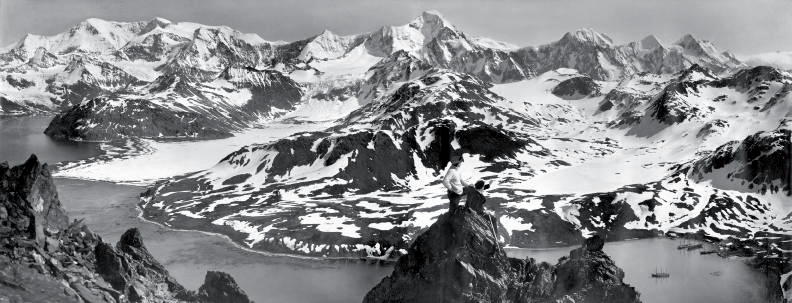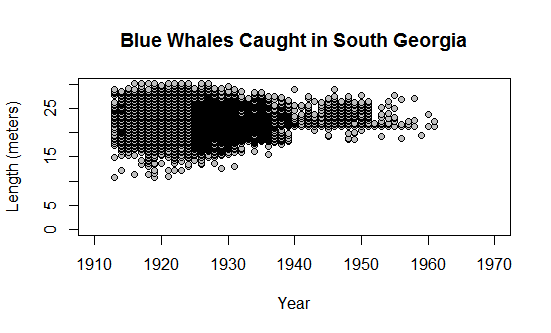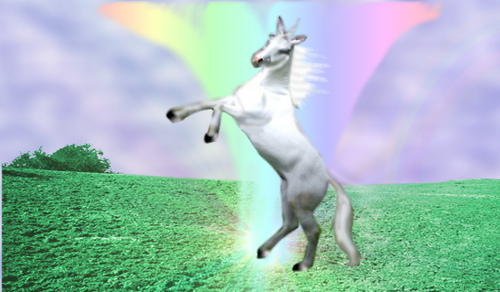Hidden within the International Whaling Commission’s whaling data from the last 150 or so years are stories, if only we tease them out. What can eye-glazingly long lists of data on whales show us – other than that human greed destroys species?
The story is set in South Georgia, a small island off the coast of Antarctica. Discovered as early as the 17th century, it was (unsurprisingly) claimed by Britain in 1775, but it’s not until the early 1900s that our story begins. Since the island was teeming with wildlife, including whales, whaling began in earnest once bases were created. It is in 1913 that our story of blue whales begins.

Pic: Wikimedia Commons
With 59 whales being taken in December 1913, the decimation of the blue whale population started slowly (although a few blue whales had been taken earlier, and other species had been targeted in South Georgia for a decade). Although 59 whales are peanuts compared to the catch numbers that would come later, they are still a testament to human ingenuity. That’s 59 of the largest species that has ever lived, and humans were able to a) catch them b) strip of them of their blubber and meat and c) process that on ships.

Humans were unstopped by the occurrence of World War I, with the IWC records showing that over 5000 blue whales were taken at South Georgia between 1914 and 1918. Considering that there was a war on (haven’t you heard?), this seems strange, to say the least. But given that naval technology did not yet play as large a role as it would in World War II, the British decision to continue whaling makes more sense, especially as it also contributed needed resources to the population, in the form of whale-derived margarine and even explosives.

Pic: Wikimedia Commons
Despite the relatively low numbers of whales being caught (yeah… a couple thousand is “low” compared to the whaling later and in other places), among these whales were the biggest ones caught in South Georgia, 99 feet (nearly 32 meters) long monsters. Of course, there are all kinds of problems with taking decades-old measurements at face value – they could have been in Norwegian feet, which are shorter than our standard feet, the total length could have been measured differently from later whalers, or be rounded measurements. But regardless, these whales were undoubtedly big. These sizes were able to hang on for a few years as whaling picked up speed in South Georgia, but the inevitable decline in size did come, as the largest whales were picked off and only the smaller ones were left.

It took until 1924 for the catch rate to really increase, but once it did – oh boy. Unsurprisingly, as whaling escalated, the sizes of the largest whales decreased. And so too did the number of whales caught each year, because well, what else could possibly happen? The 1927 peak of 3685 blue whales dropped to barely over a thousand whales the following year, and by 1932, only 319 whales were caught – a staggering ten-fold decrease in five years. In two decades, humans had completely decimated the blue whale population around South Georgia.

Pic: Wikimedia Commons
By the time World War II rolled around, there were hardly any blue whales left around South Georgia, but that didn’t stop the British from sending ships down to protect the whaling industry. At a time when whaling vessels from other sites were being repurposed for war, the Queen of Bermuda was sent south to patrol the area for Germans and protect the valuable whale oil, because (you guessed it) it was needed as margarine. (She was picked because the two alternatives were serving as an armed boarding vessel and a minesweeper.)
The tapering off of captured blue whales was hardly the end of whaling on South Georgia – whalers predictably switched to more abundant whales, but still killed blues when they encountered them. Despite the rapid decline in blue whale stocks, there was no protection for them until 1965, which one author described as so futile at that point in time that “they may as well have made it illegal to hunt unicorns.”

Source: Flickr, scorpiorules58
In 1996, there were estimated to be 1,700 blue whales left in the Antarctic. Not just South Georgia – the whole dang Antarctic Ocean. While there are hopeful signs that the population there is increasing slowly, at 7.3% a year, the numbers are still pathetically low compared to the pre-whaling abundance. While the conclusion of the story these data paint is hardly optimistic, at least humans may have learned some lessons from it, because hey, one can always hope.
For additional reading:
The cited quotations come from “Wild Blue” by Dan Bortolotti. For a comprehensive review of whaling, check out “The History of Modern Whaling” by J.N. Tonnessen. For the study that calculated the rate of blue whale population increase, see Branch T, Matsuoka K & Miyashita T. 2004. Evidence for increases in Antarctic blue whales based on Bayesian modelling. Marine Mammal Science, 20, 726–754.
